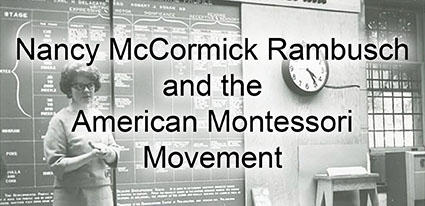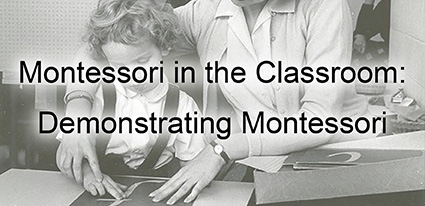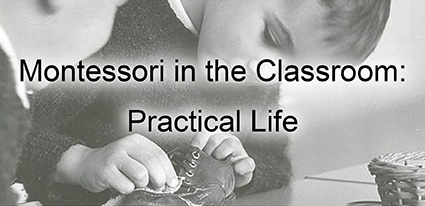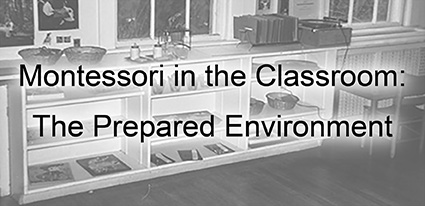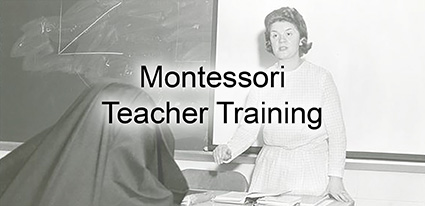The Montessori method of education was developed in Italy at the turn of the 20th century by Maria Montessori (1870-1952). In the Montessori method, children use special learning materials in a prepared environment to sequentially develop and master concepts and motor skills. The Montessori method of education was first introduced to the United States in the early 1900s. However, it quickly fell out of favor with American educators. Widespread American interest in Montessori did not return until the 1950s, thanks in large part to Nancy McCormick Rambusch. Rambusch founded the American Montessori Society in 1960, which sought to promote the Montessori method in the United States. AMS succeeded in reviving the Montessori method in the United States and gaining recognition for it as a valid educational system. The society has become the foremost resource in America for Montessori education and teacher training. Through its varied activities it continues to provide information, support, and advice to schools, teachers, and parents, and to integrate the ideas of Maria Montessori and her many followers into the structure of American education.
This exhibit explores the origins of the Montessori movement in the United States and the Americanization of the Montessori method. It is comprised of materials from the American Montessori Society Records, which were donated to UConn’s Archives & Special Collections in 2006 and digitized beginning in 2016. The American Montessori Society Records document the history of an important American educational organization, and consist of printed, typescript, and handwritten materials; sound recordings; films; photographs; publications; and slides. The collection, although not complete, reflects AMS’s professional and administrative activities and also provides historical information about the Montessori system of education in general.
To learn more about this collection, visit the American Montessori Society Records webpage. The complete finding aid for the collection can be found here.
This online exhibit was created by A. Gabrielle Westcott, formerly a student assistant in the UConn Archives and a PhD candidate in the UConn Department of History.
Nancy McCormick Rambusch believed that in order for the Montessori method to be taken seriously within the United States it needed to be integrated into the existing system of American educational training, rather than exist outside of it. Rambusch was a leading proponent of modifying the Montessori method to fit American culture. While she believed that Montessori education in America should start with the classic model created by Maria Montessori, she sought greater flexibility in the materials used to teach students, the ages at which students were supposed to master certain skills, and the role of Catholicism in Montessori education. Learn more…
In the film Demonstrating Montessori (1980), Montessori teachers demonstrate exercises designed to teach children practical life, language, mathematics and geography, and to develop sensorial awareness. These exercises include pouring water, matching words with pictures, transitioning from tangible mathematical materials (gold beads) to abstract materials (cards with written numbers), identifying land, air, and water, and placing cylinders on a grid according to size. The first activities to which a child is introduced are rooted in sensory experiences. As the child progresses, the activities grow more complex and abstract. Learn more…
Montessori education focuses on more than just reading, writing, and mathematics. Exercises in practical life are designed to help children develop coordination, social consciousness, and independence. Montessori stressed the importance of allowing the child to choose their own activity. This is particularly important with regard to exercises in practical life. The child is meant to complete their activity not because they want to imitate or please the teacher, but because the activity fulfills a need and completing the activity pleases the child. Learn more…
The design of a Montessori classroom, sometimes referred to as the “Prepared Environment,” is an important component of the Montessori method of education. In each Montessori classroom, the furniture and learning materials are scaled to the child. To make learning materials inviting to the child, the teacher stores them in places that are visible and easily accessible to children. Montessori classrooms are designed to facilitate student-led learning and foster independence. Learn more…
The American Montessori Society developed standards for teacher training and certification as well as pedagogical resources to meet the Montessori educational needs in the United States. Beginning in the early 1960s, AMS held teacher training courses across the country to meet the growing demand for Montessori teachers. Prospective teachers in Montessori teacher training courses created their own manuals as part of their training. These notebooks served as a useful reference for new Montessori teachers as they transitioned to teaching their own classes. Learn more…

